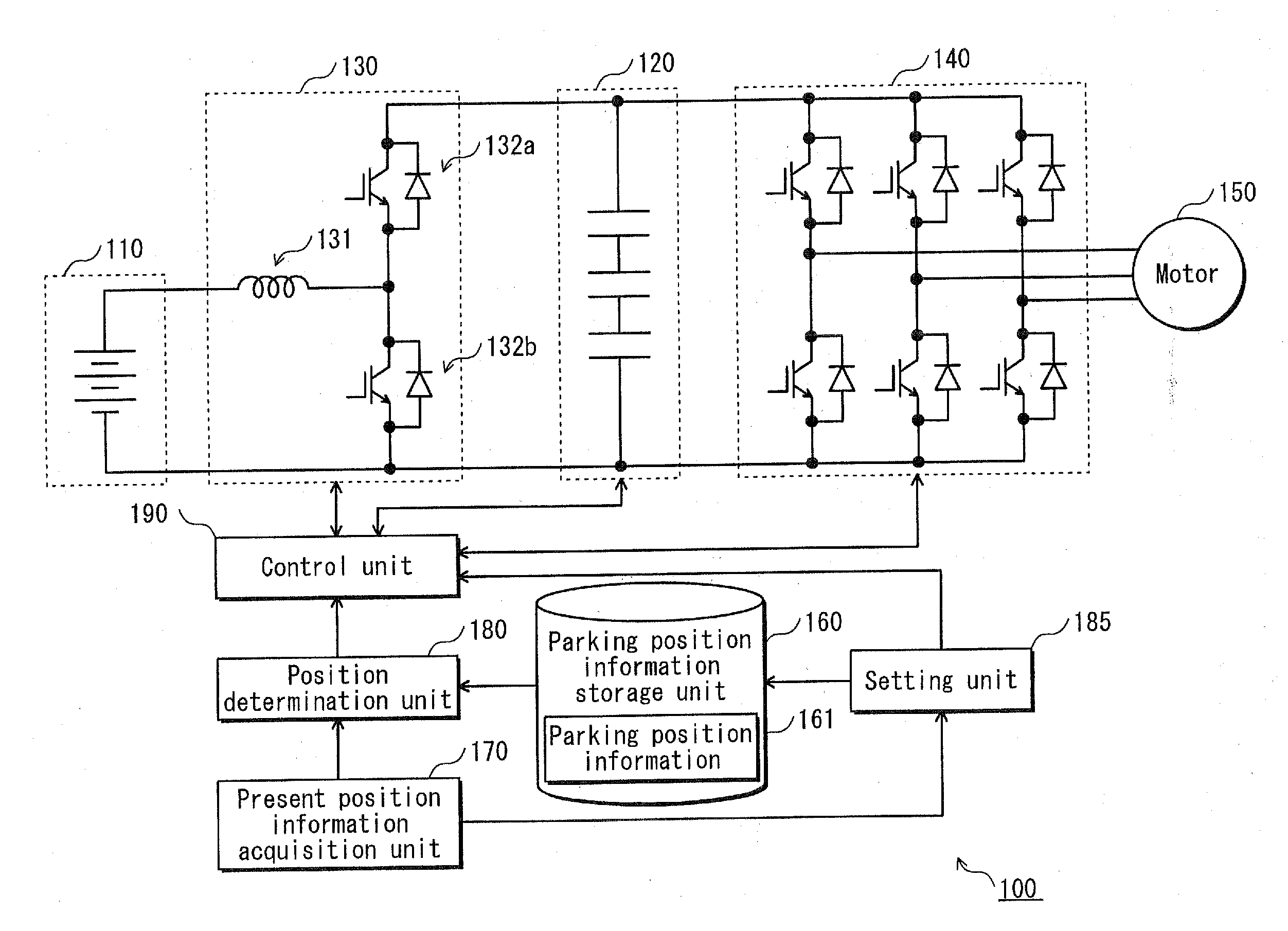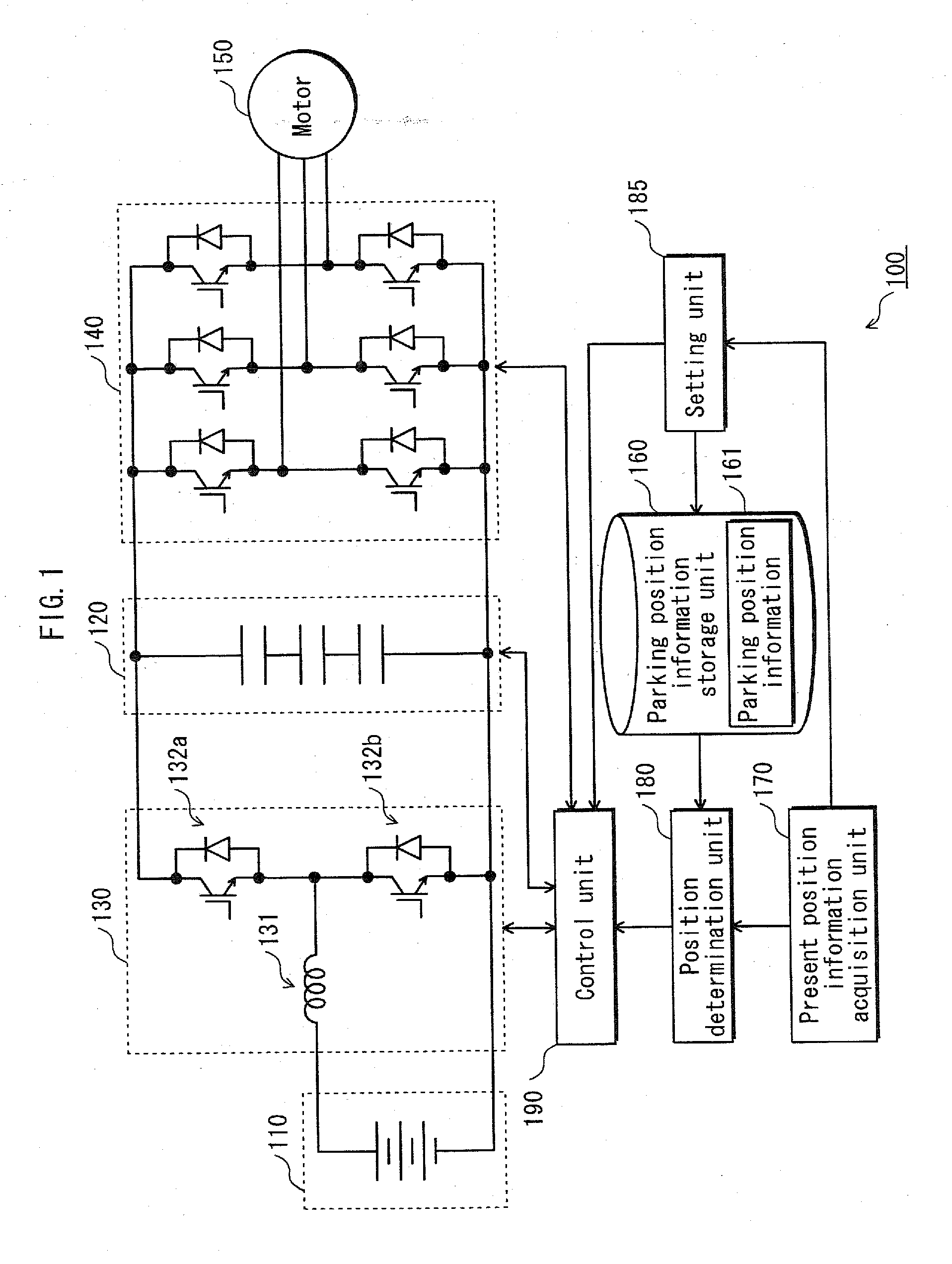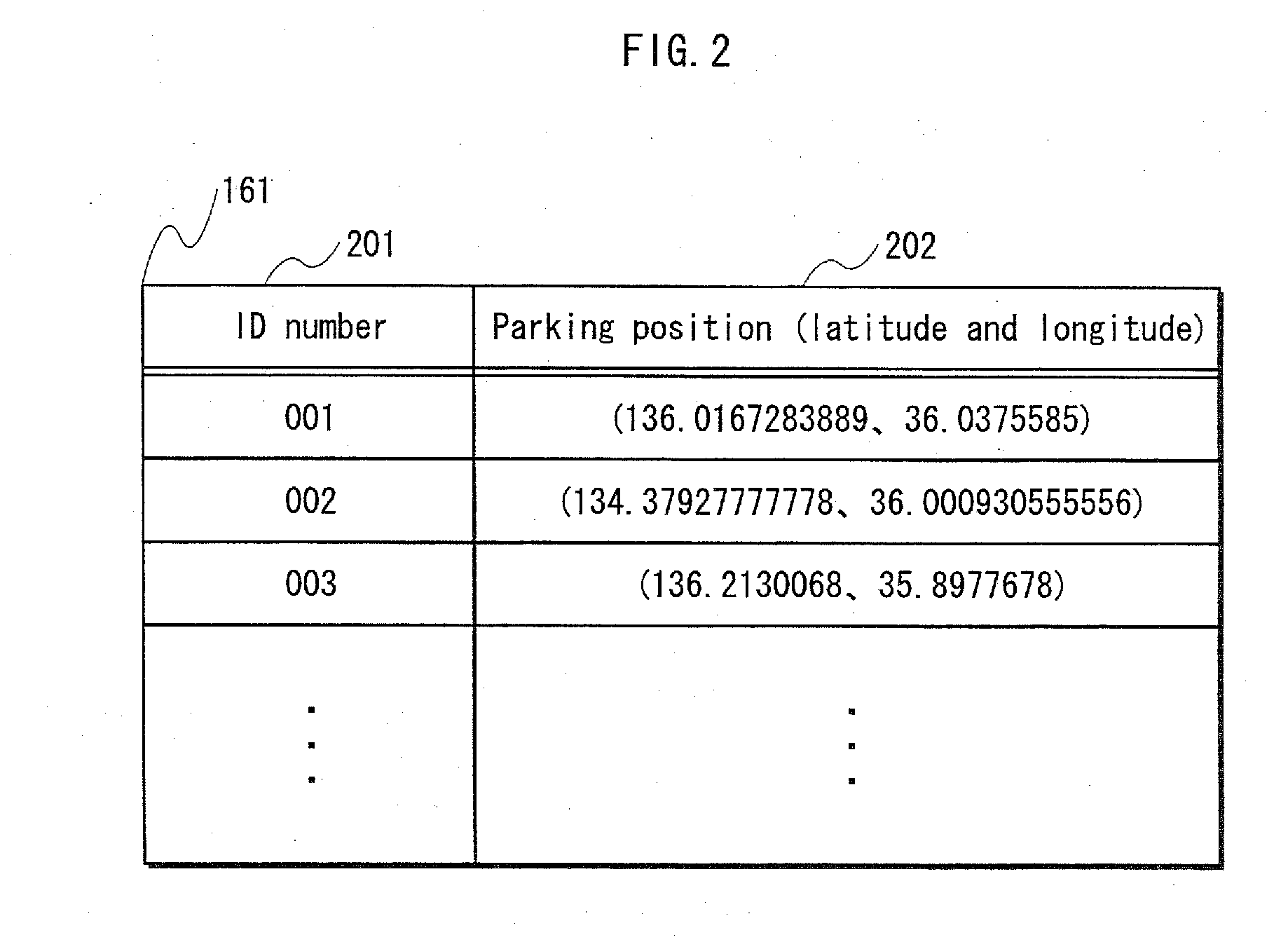Vehicle control system and automobile
a technology for controlling systems and automobiles, applied in battery/fuel cell control arrangements, propulsion by capacitors, instruments, etc., can solve problems such as waste of electric energy stored therein, and achieve the effects of preventing the life of chemical storage units from being wastefully short, reducing the voltage of physical storage units, and reducing energy loss
- Summary
- Abstract
- Description
- Claims
- Application Information
AI Technical Summary
Benefits of technology
Problems solved by technology
Method used
Image
Examples
embodiment 1
[0029]
[0030]FIG. 1 shows the structure of a vehicle control system 100 according to Embodiment 1.
[0031]As shown in FIG. 1, the vehicle control system 100 includes a chemical storage unit 110, a physical storage unit 120, a charge and discharge circuit 130, an inverter 140, a motor 150, a parking position information storage unit 160, a present position information acquisition unit 170, a position determination unit 180, a setting unit 185, and a control unit 190.
[0032]The chemical storage unit 110 is a secondary battery that stores electric power by a chemical reaction, and is realized by a nickel hydride battery, a lithium-ion battery, a lithium polymer battery, or the like.
[0033]The physical storage unit 120 stores electric power by absorption and desorption of electrons and ions with respect to an electrode, and is realized by an electric double-layer capacitor or the like. The electric double-layer capacitor may be referred to as an ultracapacitor or a supercapacitor. In recent ...
embodiment 2
[0085]In Embodiment 2, a vehicle control system is disclosed that performs an operation equivalent to the vehicle control system described in Embodiment 1, and that has a different structure from the vehicle control system in Embodiment 1.
[0086]
[0087]FIG. 6 shows the structure of a vehicle control system 200 according to Embodiment 2.
[0088]As can be seen from the comparison between FIG. 6 and FIG. 1, the vehicle control system 200 is different from the vehicle control system 100 in that the chemical storage unit 110 is directly connected to the inverter 140 without a charge and discharge circuit 134 therebetween. Also, the vehicle control system 200 is different in that the physical storage unit 120 is connected to the low-voltage side of the charge and discharge circuit 134, and the chemical storage unit 110 is connected to the high-voltage side of the charge and discharge circuit 134.
[0089]Furthermore, the vehicle control system 200 includes a control unit 191, instead of the cont...
embodiment 3
[0099]Embodiment 1 discloses a method for supplying electric power (charging) from the physical storage unit to the chemical storage unit, as a usage pattern of the electric power of the physical storage unit. Embodiment 3 discloses another usage pattern of the electric power of the physical storage unit.
[0100]
[0101]FIG. 7 shows the structure of a vehicle control system 300 according to Embodiment 3.
[0102]As shown in FIG. 7, in addition to the structure of the vehicle control system 100 in Embodiment 1, the vehicle control system 300 further includes an air conditioner inverter 141 and an air conditioner motor 151, both of which are for use in an air conditioner. The inverter 141 is directly connected to the chemical storage unit 110.
[0103]Furthermore, the vehicle control system 300 includes a control unit 192, instead of the control unit 190 in Embodiment 1.
[0104]The air conditioner inverter 141 receives electric power from the chemical storage unit 110, generates an alternating cu...
PUM
 Login to View More
Login to View More Abstract
Description
Claims
Application Information
 Login to View More
Login to View More - R&D
- Intellectual Property
- Life Sciences
- Materials
- Tech Scout
- Unparalleled Data Quality
- Higher Quality Content
- 60% Fewer Hallucinations
Browse by: Latest US Patents, China's latest patents, Technical Efficacy Thesaurus, Application Domain, Technology Topic, Popular Technical Reports.
© 2025 PatSnap. All rights reserved.Legal|Privacy policy|Modern Slavery Act Transparency Statement|Sitemap|About US| Contact US: help@patsnap.com



